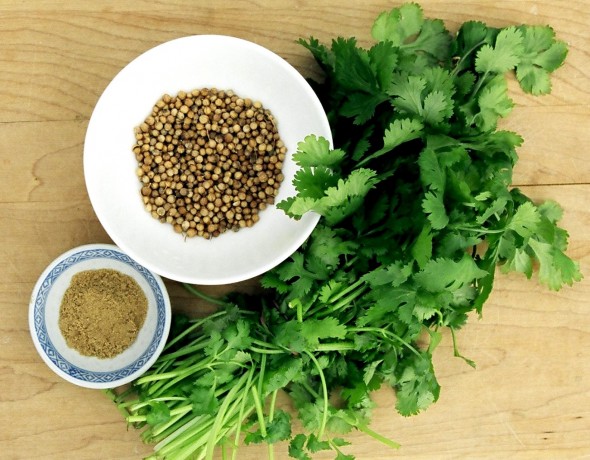A recent question was brought forth: is coriander the same as cilantro? So, I set out to uncover the mystery of this commonly asked question, and found that, perhaps the confusion simply lies in geographical and cultural interpretation. I, for one, am quite familiar with cilantro but have known little about coriander. Below, you will find a few tidbits that I have discovered since embarking on this quest for knowledge.
The delicate and bright green, leafy herb we know best as cilantro here in the United States, goes by the name of coriander leaf in Great Britain. This completely different reference may have been masking the direct correlation between coriander and cilantro for many curious folks. Thus, it is important to note that coriander seeds do produce the cilantro plant. When also taken into account that Coriandrum Sativum is cilantro’s given name, this makes perfect sense! As it turns out for us here in the U.S., there is much more influence of Spanish uses for “coriander leaves”, and “cilantro” is the Spanish derived term for the plant. Herein lies the discrepancy of terms, and seemingly the source of confusion concerning coriander and cilantro.
Coriander seeds, cilantro’s source of life, have a warm, nutty taste highlighted by a bright citrus flavor. The best flavor can be obtained by briefly roasting the seeds before grinding them (they can also be left whole, depending on your recipe’s requirements). Coriander seeds were introduced to Britain by the Romans, and have been regarded as a high status spice over the centuries. It has been said that the Romans used coarsely ground coriander seeds much as we use ground pepper today. In India, finely ground coriander seed is used liberally, and is known as Dhania.
Cilantro, or coriander leaf, has a bright, citrus flavor and is used worldwide to complement dishes from Mexico to Southeast Asia, and is a common element in Mediterranean and Middle Eastern cooking, as well. Cilantro is a main staple in Mexican cuisine, being added to anything from salsa, gaucamole, even ice cream. Cilantro is a member of the parsley family, and is similar in stature, though cilantro’s distinct scent, flavor and lacier leaves set them apart. Claims have been made that some who try cilantro for the first time will be genetically predisposed to either love or hate the flavor, possibly finding it to taste “soapy” and unpleasant. As if it were in need of yet another alias, cilantro is also referred to as Chinese parsley. Fresh cilantro is an antioxidant, high in maganese, which is said to promote liver and kidney function.
The mysteries of cilantro, seemingly the herb of many names, have been uncovered! I hope you have found these revelations to be enlightening as I have, and even pursue this satisfied curiousity into exploring the many culinary properties of Coriandrum Sativum in your own kitchen!


